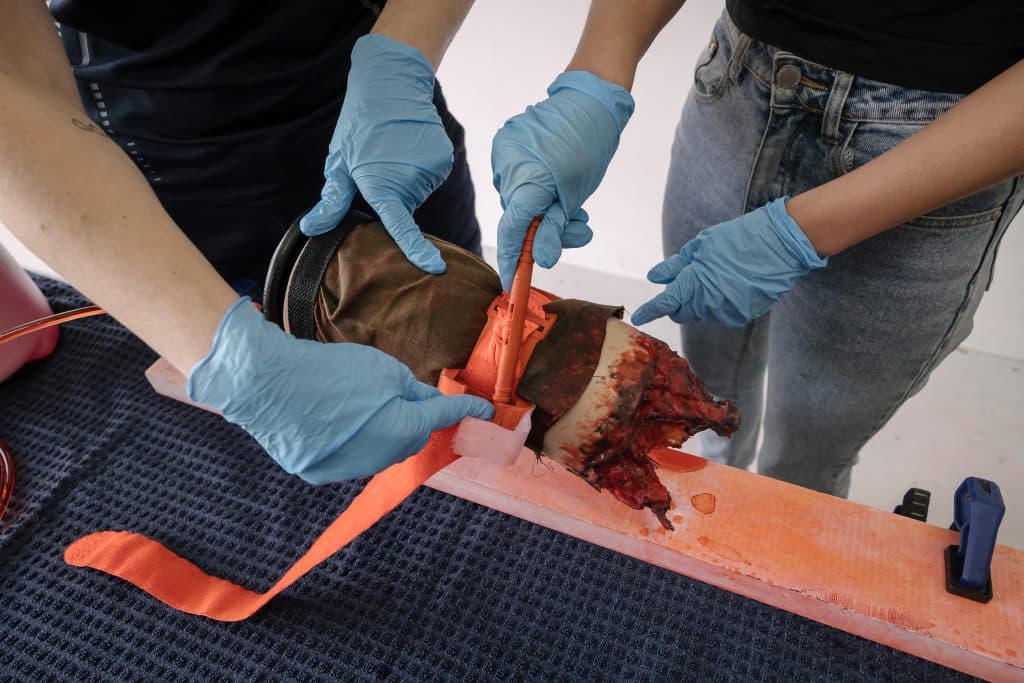Diabetes is a medical disease that afflicts approximately 415 million people globally, with numbers expecting to rise in the coming…

Are Tourniquets a Dirty Word in First Aid?
Whether it’s from first aid courses, an elaborate story, or in mainstream media, at some point we have all heard about tourniquets. From car accidents to shark bites, they provide patients with definitive solutions to severe bleeding. But how much do you really know about them?
Tourniquets have been around as early as the fourth century BC and have developed over the centuries to the current modern devices. They are tools used to limit the flow of blood and have applications in surgical, post-operative, and emergency settings. Although lifesaving, tourniquets come with many precautions, and should only be used in life-threatening situations when all other options have been exhausted.
How Does a Tourniquet Work?
When applied correctly, tourniquets apply pressure to a limb to reduce blood flow. A band is placed around the bleeding limb, above the site of injury, and then tightened until the bleeding is controlled.
Benefits
Tourniquets can be lifesaving and are an essential first aid skill. In cases where there is extreme bleeding from a limb, tourniquets can assist in controlling the blood flow and therefore minimise blood loss. This is especially important in remote areas, where advanced medical assistance may take many hours to arrive. There are many precautions with tourniquets, however, and should consequently be treated as a last resort method.
Downsides
Although lifesaving, tourniquets can cause complications. In reducing or completely stopping blood flow to the limb, oxygen can no longer reach the tissues and the tissues with begin to damage. This includes skin, muscle, and nerve tissue. Permanent damage may occur and possibly tissue death. Additionally, whilst the tourniquet is applied, toxins may build up in the limb. When the tourniquet is removed, the body will send a rush of blood to the affected area in an attempt to correct this, causing swelling and further vessel damage.
When Should I Use a Tourniquet?
As mentioned, tourniquets are an absolute last resort method, when all other attempts to prevent bleeding have failed. Before considering a tourniquet, first aiders should attempt to stem the flow of blood by applying pressure directly to the wound and applying appropriate dressings. The injured body part should be elevated as much as possible, preferably above the heart, to reduce circulation to the area. If it is evident that this method is not working and the patient is quickly bleeding through dressings, tourniquet use may be considered.
Tourniquets should only be used if the patient is likely to die as a result of the bleeding. Keep monitoring the injury to ensure bleeding does not recommence. Always ensure you explain to the patient what you are doing and why, and record the time you applied the tourniquet. Remember, the loss of a limb is preferable to the loss of life.
When Should I Avoid Using a Tourniquet?
Do not use a tourniquet if;
• The bleed is not life-threatening
• You have not attempted to control the bleeding through other methods first
• The bleed is anywhere other than a limb
• You cannot place the tourniquet above the site of injury on the limb
Tourniquets should not be used for any other injury (such as snake bites). Doing so can cause unnecessary pain, tissue damage or death, and further complications.
Although scary, tourniquets are undoubtedly a lifesaving skill for a first aiders toolbox. Learning the correct indications and application of tourniquets may prove to be the difference between a desirable outcome and a fatal one.


